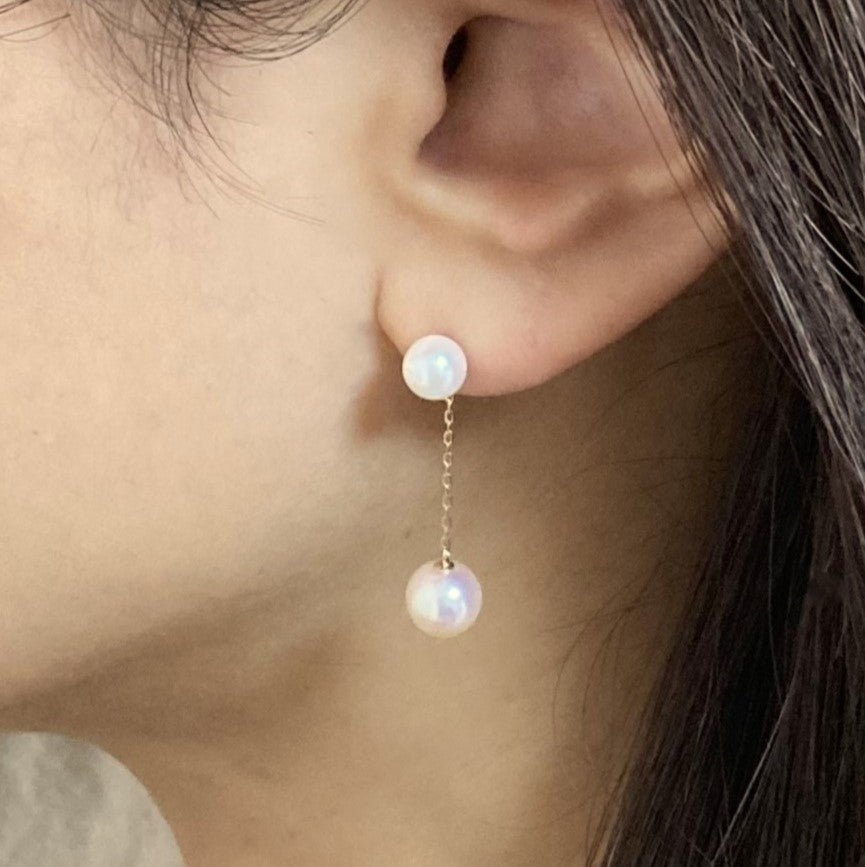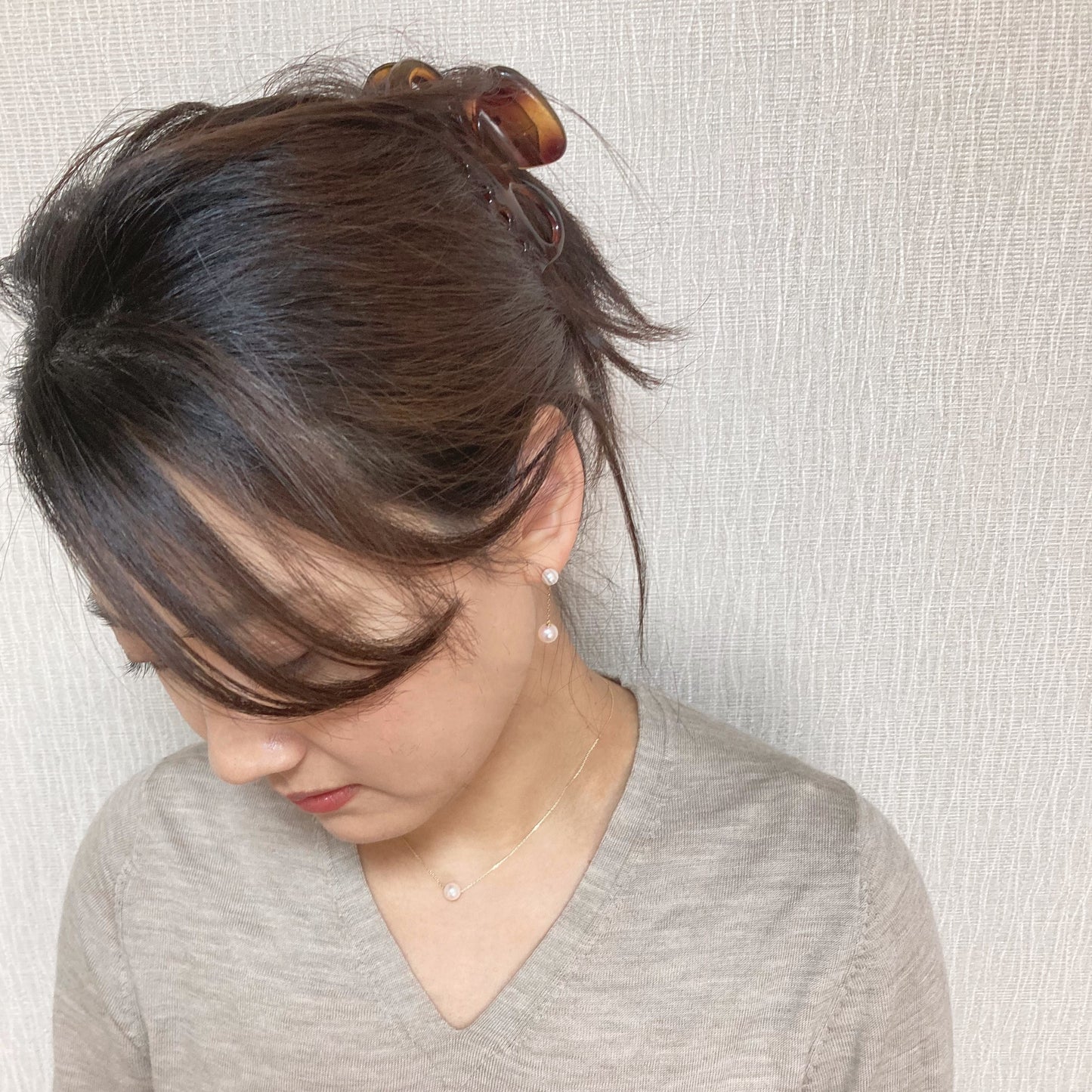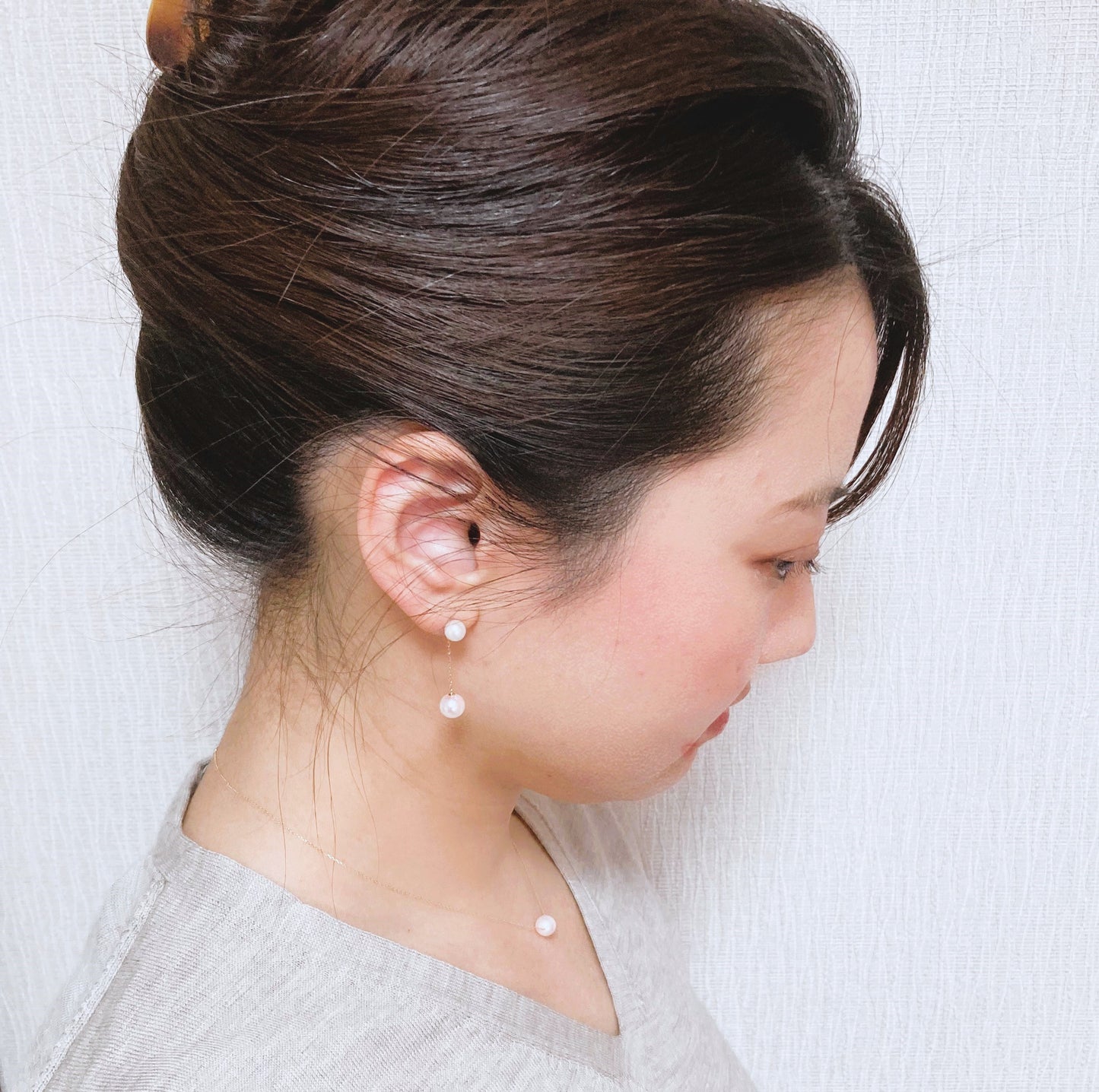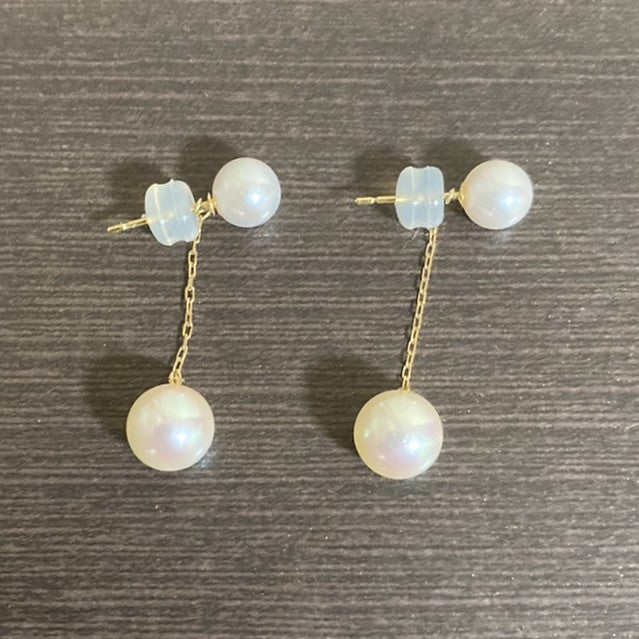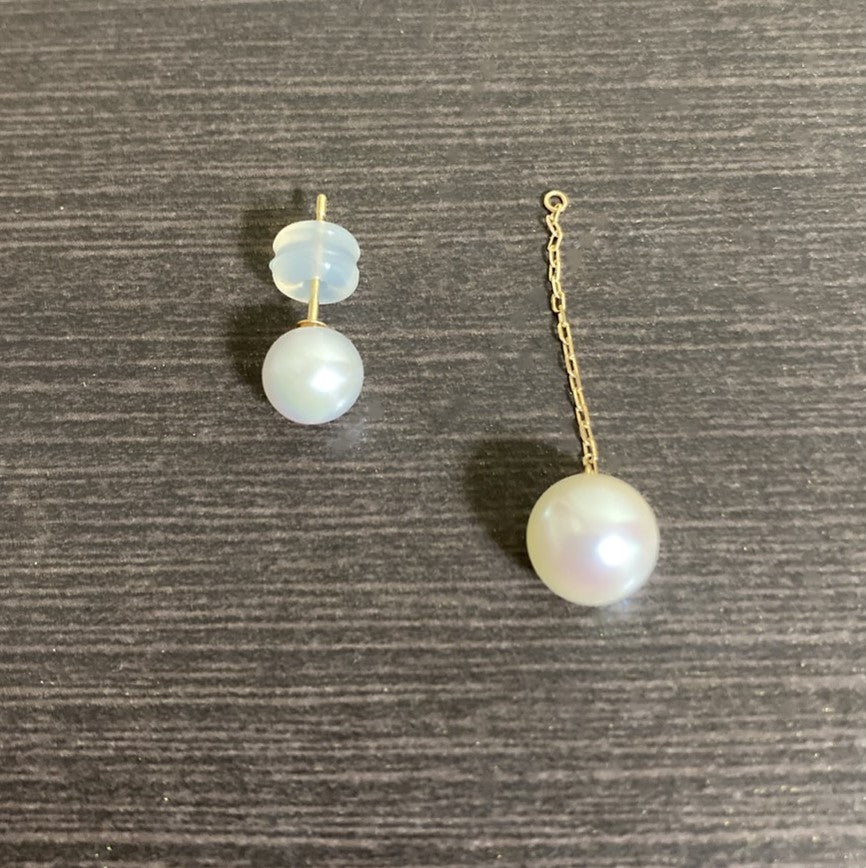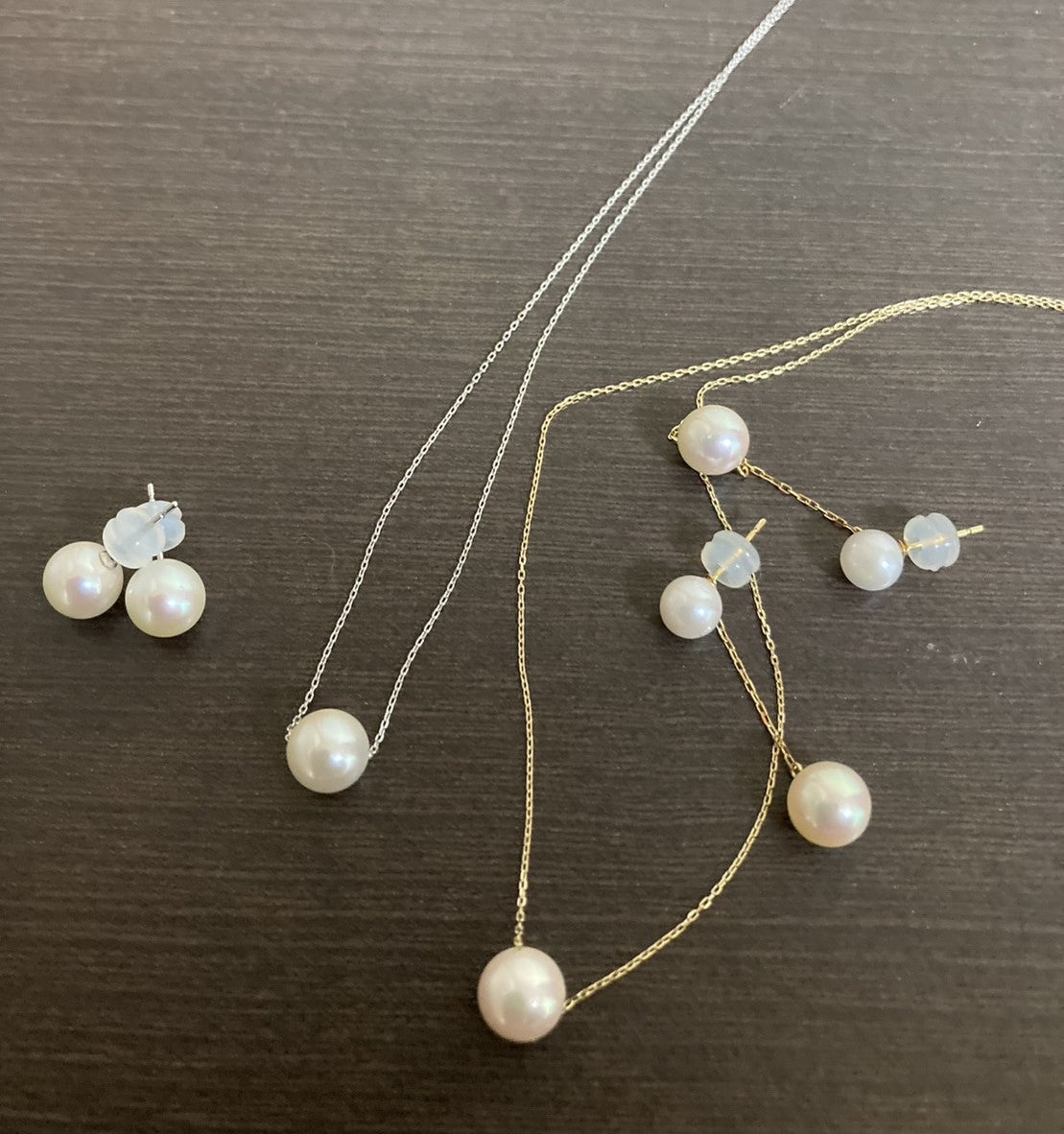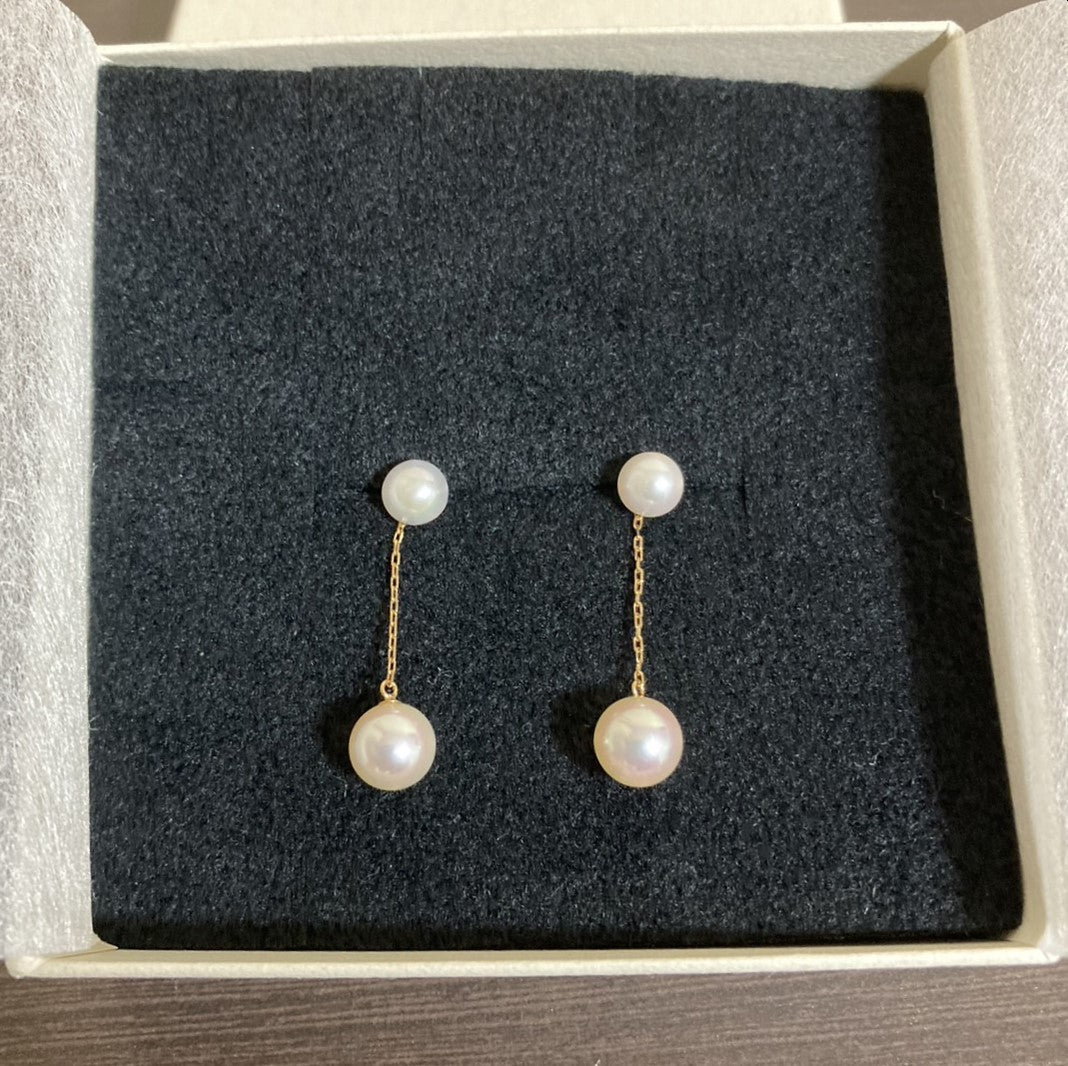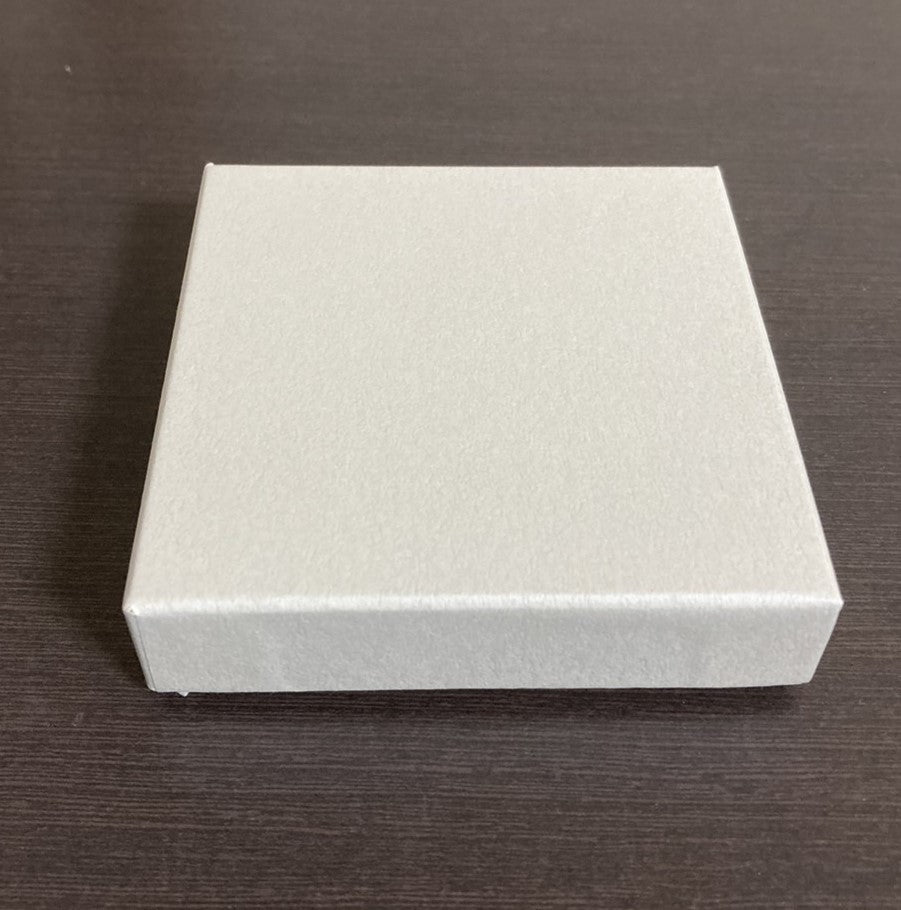~S~ siniséya
~KINU~2-strand 2-way Akoya pearl earrings 7mm and 5.5mm
~KINU~2-strand 2-way Akoya pearl earrings 7mm and 5.5mm
Couldn't load pickup availability
KINU means silk in Japanese. The ~KINU~ series uses only precious Akoya pearls, which are as delicate, soft and shiny as silk. It blends perfectly with all face types and skin tones to create an impression of elegance and sophistication.
This product is a pair of 5.5mm and 7mm Akoya pearl earrings with a sexy and sophisticated design that dangles around the ear. The earrings can also be worn alone by removing the chain.
The elegant matte shine of high-quality Akoya pearls will delicately shine on your ears. The pierced posts and chains are crafted from skin-friendly 18ct, which accentuates the soft milky white color of Akoya pearls.
The unique touch of Japanese chic will add a touch of freshness to your daily life.
The earrings come in a simple paper case for easy care.
Pearl ... Akoya pearls ball of 7.0 mm and 5.5mm
Color...white to cream (each piece may vary)
Base metal ... K18 young gold
Chain length ... 15mm
Clasp...Silicone
Case... Paper (8.5 cm x 8.5 cm x 2.3 cm)
Treatment ... If wet, wipe with a dry cloth.
*Delivery of this product may take approximately six weeks.
Some general information about pearls ... Pearls, with their delicate luster, are gemstones that are not too garish and can be worn elegantly. Also called "moon drops" or "mermaid tears" because of their shine, pearls were already appreciated as a precious stone 3200 years before Christ. Pearls are produced slowly in shells, which also seems to enhance their mystical nature.
Inside the shell is a cell called “Gaitoumaku” (a coat in French), which secretes a layer of nacre (calcium carbonate). When a small foreign object enters the shell, it is enveloped by this coat and gradually forms a round-shaped core. This is the pearl. Today, the majority of pearls are cultured pearls, obtained by inserting a nucleus into the shell.
Types of Pearls… Each pearl comes from a different region and has a distinct appearance. The main types, their origin and characteristics are as follows.
◆Akoya pearls... Akoya pearls are harvested from Akoya oysters in Japan. They are cultivated in the seas of Japan, where the temperature varies from season to season, producing pearls with a fine, delicate texture and luster. Compared to South Sea pearls, they are smaller and rounder, and are usually white, pink-white or cream in color. In Japan, many families give their daughters high-quality pearl necklaces and earrings for formal occasions and evening events, as gifts to commemorate their coming of age, or pass them down from generation to generation. in generation and use them with the greatest care.
◆Freshwater pearls... They are produced from bivalves grown in freshwater, such as rivers, lakes and swamps. Mainly produced in China. Unlike Akoya pearls, the core is not placed in the mother shell during cultivation, resulting in pearls that are often irregularly shaped. Because they are grown in large quantities, they are often inexpensive and come in a wide variety of colors, including orange and purple, as well as white.
◆South Sea Pearl... They are pearls from silver-lipped oysters over 30 cm long. It is mainly cultivated in the South Seas, particularly in Australia. Due to the size of the shell, the pearls themselves are also large, with a diameter of 10 to 15 mm. There are two main color types, gold and white, which are distinguished by their satin luster.
◆Black Pearl (Tahiti Pearl)... The most striking characteristic of this pearl is its enigmatic color. The color can vary between black, green and red, but those that are clearly black are known as black pearls. More than 90% of black pearl mother shells come from Tahiti. Compared to Akoya pearls, black pearls are larger, usually 9-11mm.
◆Faux Pearls... As their name suggests, these are artificially created pearls. They are made by artificially spraying a layer of mother-of-pearl around a core. Today, thanks to advanced technology, some pearls can be mistaken for real pearls and are inexpensive and widely distributed throughout the world. There are different types of beads, such as plastic beads, glass beads and cotton beads, depending on the material and production method.

